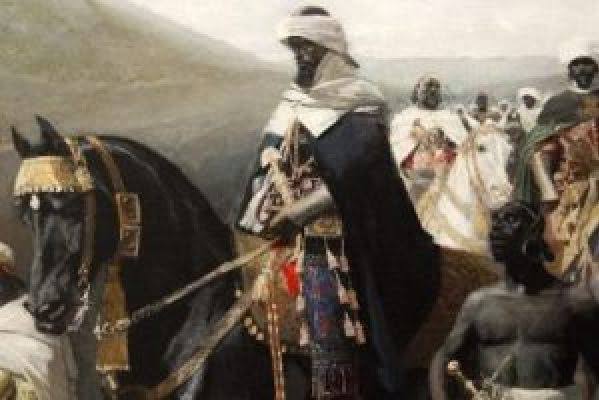The Beni Merin were a nomadic Berber tribe from the Sahara, pushed westwards by Hilali invaders. They settled northeast Morocco in the period when King John was forced by the English barons to sign Magna Carta (in 1215) and the Spanish Inquisition began to persecute Muslims and Jews.
The Beni Merin tribesmen took part in the battle of Alarcos of 1195, so they were well aware of the potential rewards of the jihad (holy war) that they began waging – with the help of Christian mercenaries – against the Almohads. By taking Fez on 20 August 1248, their leader Abou Yahya established the Merinid dynasty.
His son Abou Youssef crossed the Straits of Gibraltar four times to help the Muslims reconquer lost territory, notably after one memorable battle on 8 September 1275, in which the army led by the Christian hero Don Nuno Gonzales de Lara was routed – a black day for the Cross.
Abou el Hassan was the son of an Abyssinian mother and became known as the Black Sultan. He ruled the Merinid Empire from 1331 to 1351 (during the Hundred Years War in Europe) and was a prodigiously powerful and active man. He reorganised the empire between the Atlantic and the Gulf of Gabes in Tunisia, and held it with an iron hand. However, he was less successful in Spain, where his army was beaten at the battle of Rio Salado near Tarifa in October 1340.
Hassan died an embittered man and was buried within the Chellah necropolis in Rabat. His own son Abou Inan had rebelled against him to rule until 1358, when he was strangled by a vizier in favour of a five-year-old pretender. Inan had lost control of what is now Algeria and Tunisia, the Maaqil Arab invaders started to move in, the Spanish connection was finished, and the Christians began their encroachments. The gangrene of anarchy set in under various infant sultans.
Although their political achievements could not be compared with those of the Almohads, the Merinids left a substantial cultural legacy in the shape of medersas in delicate Hispano-Moorish style, which can be seen in Fez, Meknes and Salé. The Medersa Bou Inania in Fez, finished in 1357, is one of the most remarkable, with a clepsydra water clock in the narrow street outside that at one time told the time with 13 brass gongs.


